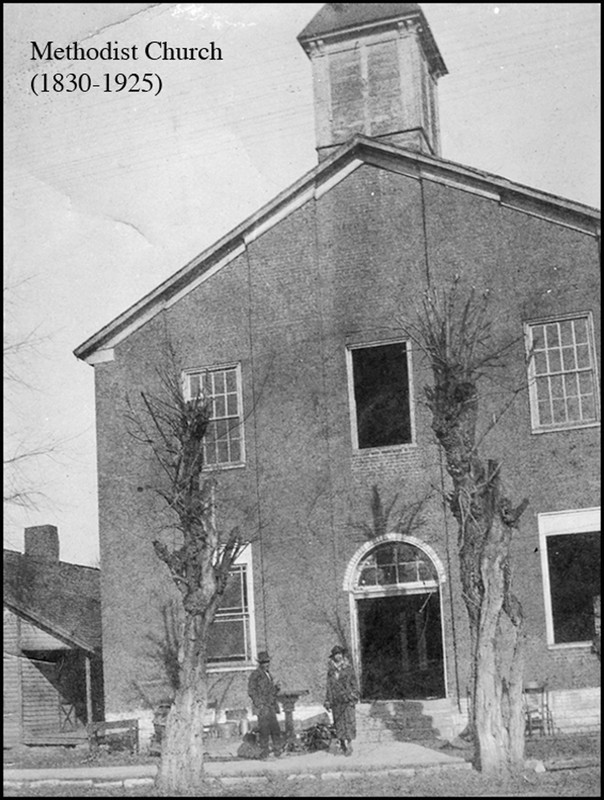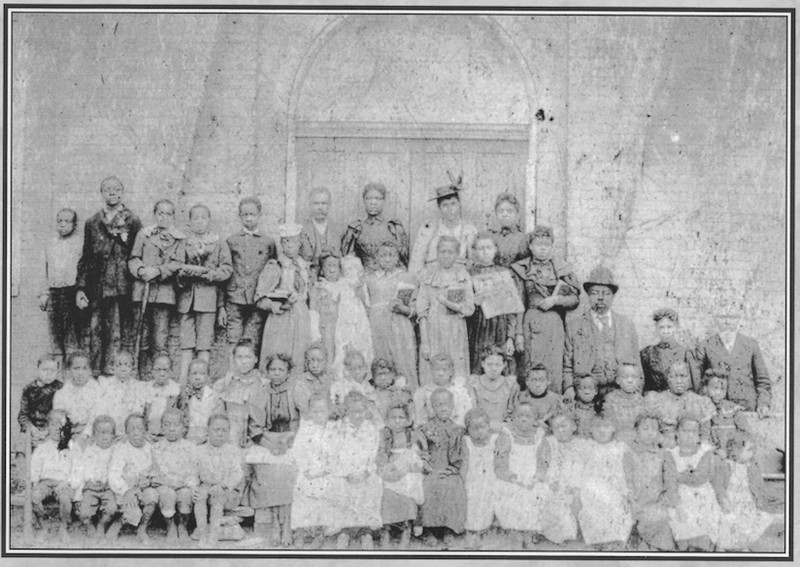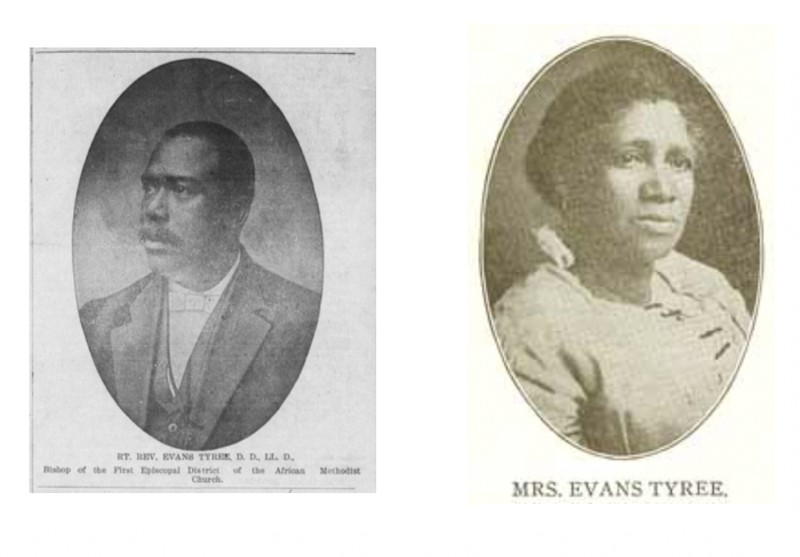Original Site of the Methodist Church and Shorter Chapel AME Church
Introduction
Text-to-speech Audio
Images
Shorter Chapel ca 1920s

Shorter Chapel ca 1920s

Shorter Chapel Sunday School class, perhaps taken upon the dedication of the sanctuary in 1873.

Newspaper clipping announcing the dedication of the Shorter Chapel sanctuary in 1873

Bishop Evans Tyree and his wife who were leaders in the AME Church and instrumental in giving Shorter Chapel its strong start.

Backstory and Context
Text-to-speech Audio
In 1799, Franklin founder Abram Maury provided land in the new town for a Methodist church at the time of the city’s founding. In 1830, the white Methodist Church congregation in Franklin constructed a large, two-story building at this site made of bricks that were hand-made by enslaved laborers.
Shorter Chapel was organized in 1868 by formerly enslaved people here. Bishop Jordan Winston Early of the African Methodist Episcopal Church had been sent to this area to organize congregations and was leading the new church in Franklin. The following year, Nashville hosted the AME Annual Conference in September. Newly elected Bishop James Alexander Shorter (1817-1887) presided over the meeting. The new church in Franklin took the name "Shorter Chapel" in honor of his good works and significant contributions to the AME Church nationally.
In 1873, the Trustees of Shorter Chapel started negotiations with the Trustees of the white Methodist Church (First Methodist Church) to purchase their sanctuary at this site on Church Street. On May 12, 1873, the Trustees of the two congregations met and signed the deed giving Shorter Chapel the property. The building had been damaged during the War, however, by the following spring, the sanctuary was ready to be dedicated. Bishop John Brown came to Franklin from Washington, DC for the ceremony and dedicated Shorter Chapel's new sanctury, which by then boasted an organ and choir.
The church continued to grow and thrive over the next several decades. Around 1879, Reverend (later Bishop) Evans Tyree and his wife were stationed in Franklin. Bishop Tyree was credited with building a parsonage next to the sanctuary during this appointment.
In December 1924, trustees of Shorter Chapel - undertaker and businessman Henry J. Ewing, and physicians Dr. Charles C. Johnson and Dr. J. W. Hudson - negotiated for the trade of their original sanctuary for an empty lot on Natchez Street, plus an additional $500.
According to oral history, the original sanctuary was dismantled and many of the original bricks, front doors, and first floor windows of the church were carried in a parade by hand and wheel barrows to the present site through the town’s main streets. These materials were used to reconstruct today’s Shorter Chapel where the bricks and windows are still part of the church architecture. Rev. Charles H. Williams was the pastor during this move.
